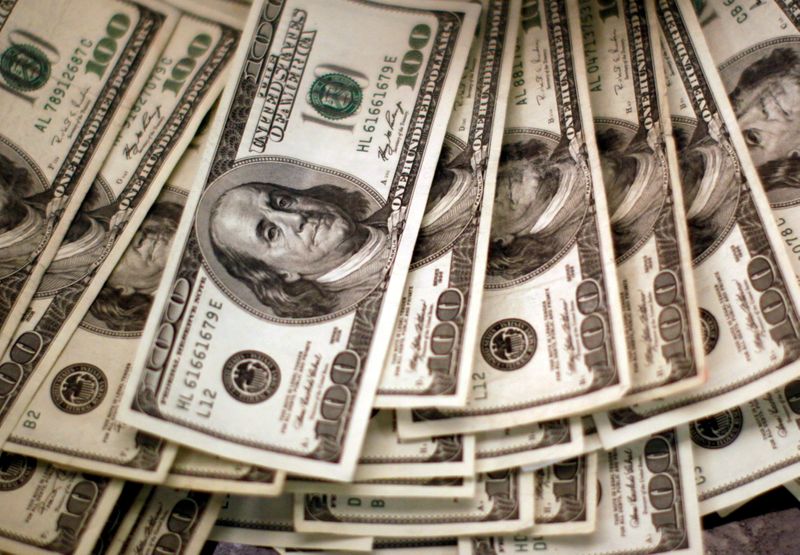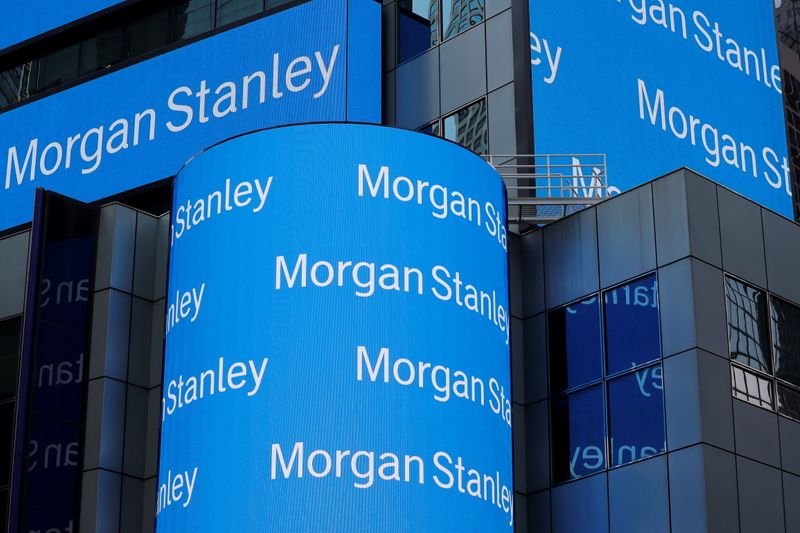WORLDWIDE: HEADLINES
S&P Global cuts India’s growth forecasts, trims EM overall

S&P Global cut its growth forecasts for some of Asia’s top economies including India, the Philippines and Malaysia on Monday, offsetting upgrades to China and South Africa and much of Latin America.
The estimates, which feed into S&P’s closely-followed sovereign ratings, saw India’s growth projection chopped to 9.5% from 11% due to its COVID-19 outbreak, the Philippines’ lowered to 6% from 7.9% and Malaysia’s downgraded to 4.1% from 6.2%.
In contrast, China’s forecast was nudged up to 8.3% from 8%, Brazil’s was hoisted to 4.7% from 3.4%, Mexico’s to 5.8% from 4.9% while those of South Africa, Poland and Russia were lifted to 4.2%, 4.5% and 3.7%, respectively, from 3.6%, 3.4% and 3.3%.
“The top risk facing emerging market economies (EMs) is a slower-than-expected rollout of the vaccines,” S&P’s economists said in new report, adding that the pandemic would only subside once vaccinations “reach a level consistent with herd immunity”.
In Asia’s emerging economies, vaccines are currently being administered at a rate of 0.2 doses per 100 people per day. At this rate, S&P estimated it would take another 23 months for 70% of EM Asia’s population to be fully vaccinated.
The second big risk facing emerging economies, it said, was if strong U.S. growth and inflation cause an early tightening of U.S. monetary policy which then pushes up the dollar and makes servicing debt denominated in the U.S. currency more costly.
“While EM policymakers can’t control U.S. inflation dynamics and the policy response, they can implement measures to influence domestic growth. In the context of the current pandemic, a key measure is stepping up vaccinations,” S&P said.
Full coverage: REUTERS
Facebook hits $1 trillion value after judge rejects antitrust complaints

A U.S. judge on Monday dismissed federal and state antitrust complaints against Facebook Inc (FB.O) that sought to force the social media company to sell Instagram and WhatsApp, saying the federal complaint was “legally insufficient.”
Facebook shares rose more than 4% after the ruling. The share price rise put Facebook’s market capitalization over $1 trillion for the first time.
The dismissal was the first big blow to state and federal lawsuits against Big Tech firms last year seeking to rein in alleged abuses of their massive market power.
Judge James Boasberg of the U.S. District Court for the District of Columbia said the FTC failed to show that Facebook had monopoly power in the social-networking market but said the FTC could file a new complaint by July 29.
He also dismissed a lawsuit by multiple U.S. states, saying they waited too long to challenge the acquisitions of Instagram and WhatsApp in 2012 and 2014 respectively. The judge did not invite the states to refile their complaint.
A spokesperson for the New York Attorney General’s office said it was “considering our legal options.”
Facebook had asked for the lawsuits to be dismissed.
Regarding the FTC lawsuit, the judge wrote: “Although the court does not agree with all of Facebook’s contentions here, it ultimately concurs that the agency’s complaint is legally insufficient and must therefore be dismissed.”
A Facebook spokesperson said: “We are pleased that today’s decisions recognize the defects in the government complaints filed against Facebook.” An FTC spokesperson said the agency was “closely reviewing the opinion and assessing the best option forward.”
A bright spot for the FTC in the opinion was the judge’s saying that the agency was “on firmer ground in scrutinizing the acquisitions of Instagram and WhatsApp, as the court rejects Facebook’s argument that the FTC lacks authority to seek injunctive relief against those purchases.”
Full coverage: REUTERS
WORLDWIDE: FINANCE / MARKETS
Dollar bides time below two-month highs before payrolls test

The dollar hovered below a two-month high versus major counterparts on Tuesday, with traders largely sidelined ahead of a closely watched U.S. jobs report, which could sway the timing of an exit from Federal Reserve stimulus.
The dollar index, which tracks the greenback against a basket of six major currencies, was at 91.884 early in the Asian session after retreating from as high as 92.408 on June 18, in the week the Federal Open Market Committee shocked markets by predicting two interest rate hikes by end-2023.
The Fed commentary since then has put the focus on the data to determine when a tapering of asset purchases and higher rates are appropriate, with Chair Jerome Powell saying a weak ago that policymakers won’t act on just the “fear” of inflation, and will encourage a “broad and inclusive” job market recovery.
The U.S. Labor Department is expected to report a gain of 690,000 jobs in June, compared with 559,000 in May, and an unemployment rate of 5.7% versus 5.8% in the previous month, according to a Reuters poll of economists.
Investors are also looking at U.S. consumer confidence data on Tuesday as well as the Institute for Supply Management’s manufacturing index on Thursday for clues as to where interest rates are headed.
The dollar bought 110.620 yen, hanging below a nearly 13-month high of 111.110 reached last week.
Both the dollar and yen benefited from some safe-haven demand as the more contagious Delta strain of the novel coronavirus spread in Asia and elsewhere, stoking fears of further lockdowns.
The euro was at $1.19210, edging back toward the 2-1/2-month low of $1.8470 touched on June 18.
“The market had been positioned long of the single currency on optimism regarding the vaccine catch-up trade in the region (but) forecasts that the Delta variant of COVID could spread through Europe (in) the summer months could now be undermining confidence in this trade,” Rabobank strategist Jane Foley wrote in a report, cutting a one-month euro forecast to $1.19 from $1.20.
Full coverage: REUTERS
Oil falls as flare-ups of COVID-19 variant threaten fuel demand

Oil prices slipped for a second day on Tuesday on worries about slower fuel demand growth as outbreaks of the highly contagious COVID-19 variant Delta sparked new mobility restrictions around the world.
U.S. West Texas Intermediate (WTI) crude futures fell 14 cents, or 0.2%, to $72.77 a barrel at 0045 GMT, extending a 1.5% loss on Monday.
Brent crude futures dipped 10 cents, or 0.1%, to $74.58 a barrel, after sliding 2% on Monday.
The flare-up in cases of the Delta variant comes as the Organization of the Petroleum Exporting Countries (OPEC), Russia and allies, together known as OPEC+, are set to meet on July 1 to discuss easing their supply curbs.
OPEC’s demand forecasts show that in the fourth quarter global oil supply will fall short of demand by 2.2 million barrels per day (bpd), giving the producers some room to agree to add output. read more
“Oil prices fell on concerns that OPEC+ will decide to meaningfully boost output later this week just as the Delta variant of the coronavirus spreads,” Commonwealth Bank commodities analyst Vivek Dhar said in a note.
Spain and Portugal, favorite summer holiday destinations for Europeans, imposed new restrictions on unvaccinated Britons on Monday, while 80% of Australians faced tighter curbs due to flare-ups of the virus across the country.
Talks on a travel corridor between the United States and Britain also slowed, partly on concerns about a rise in cases of the Delta variant in Britain, the Financial Times reported, citing officials.
Analysts expect OPEC+ to step up supply by about 500,000 bpd in August, as the market has tightened on strong growth in fuel demand in the United States and China, the world’s two biggest oil consumers.
Investors will be looking to the latest U.S. inventory data to reinforce that view, with analysts expecting crude stocks to extend their fall for a sixth straight week, while gasoline stocks also declined, a preliminary Reuters poll showed.
Full coverage: REUTERS
Wall Street banks hike shareholder payouts after Fed gives the green light

Morgan Stanley, JPMorgan, Bank of America, Goldman Sachs and Wells Fargo said on Monday they were hiking their capital payouts after the U.S. Federal Reserve gave them a clean bill of health following their annual “stress tests” last week.
Analysts and investors had expected the country’s largest lenders to start issuing as much as $130 billion in dividends and stock buybacks from next month after the Fed last week ended emergency pandemic-era restrictions on how much capital they could give back to investors.
Morgan Stanley (MS.N) delivered the biggest surprise to investors, however, saying it would double its dividend to 70 cents a share in the third quarter of 2021. Some analysts had been expecting a boost to about 50 cents.
The Wall Street giant also said it would increase spending on share repurchases. Its shares rose as much as 3.7% in after-market trading following the announcement.
Morgan Stanley CEO James Gorman said in the announcement that the bank could return so much capital because of the excess it has accumulated over several years. The action, he said, “reflects a decision to reset our capital base consistent with the needs we have for our transformed business model.”
Bank of America Corp (BAC.N) said it will hike its dividend by 17% to 21 cents a share beginning in the third quarter of 2021, and JPMorgan Chase & Co (JPM.N) said it will go to $1.00 a share from 90 cents for the third quarter.
Goldman Sachs Group (GS.N) said it planned to increase its common stock dividend to $2 per share from $1.25.
Wells Fargo & Co (WFC.N), which has built up capital more rapidly than rivals due in part to a Fed-imposed cap on its balance sheet, said it plans to repurchase $18 billion of stock over the four quarters beginning in September.
The repurchase target amounts to nearly 10% of its stock market value and is line with expectations from analysts.
Full coverage: REUTERS